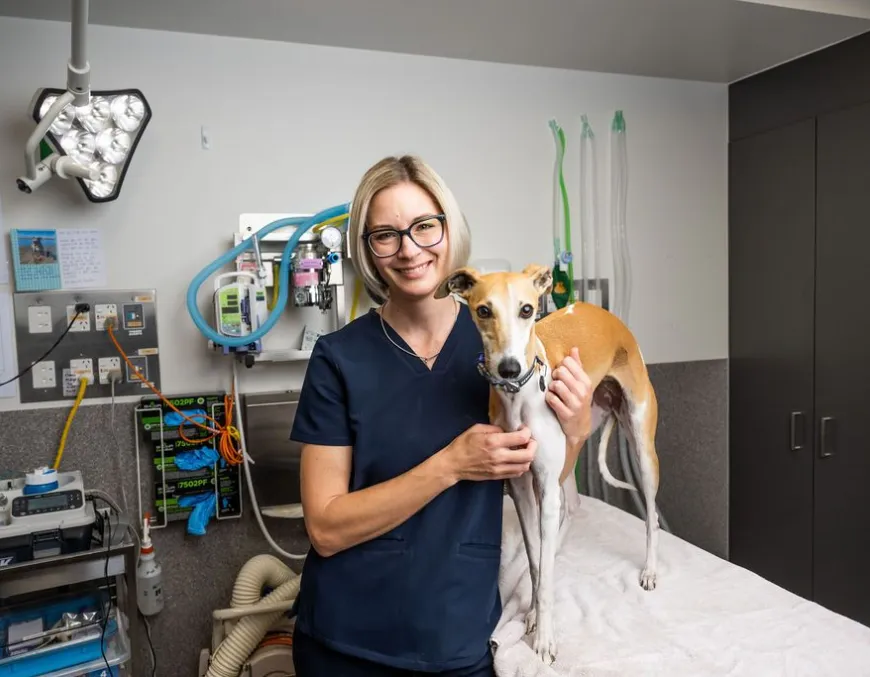Removing complex teeth safely and with minimal impact.
Crown height reduction and vital pulpotomy is a common procedure for young dogs with malpositioned teeth, particularly those with Class 2 Malocclusion (overbite), where the mandibular canines traumatise the roof of the mouth, or Class 1 Malocclusion (linguoverted mandibular canines). Orthodontic movement may not be feasible for these patients, and leaving the condition untreated can lead to chronic pain and oronasal fistula formation.

About the Crown Height Reduction procedure
The procedure starts with reducing the height of the mandibular canines and exposing the sensitive pulp inside the tooth. Because this delicate pulp is vulnerable to external elements, we cover it to ensure proper protection.
We carefully drill into the tooth to amputate a small portion of the pulp, creating space for a filling. Next, we apply a layered filling, with the first layer directly contacting the pulp tissue. This layer acts as a physical barrier against bacterial penetration and stimulates the formation of new dental material beneath it, promoting the tooth’s long-term health and stability.
“Teeth treated with vital pulpotomy generally do well, with a 90% success rate when performed correctly.”

Long-term success & monitoring
Teeth treated with vital pulpotomy generally do well, with a 90% success rate when performed correctly. To ensure the treated tooth remains healthy and continues to mature, we must periodically examine it throughout the patient’s lifetime. The first check occurs three months after the procedure, where we assess the integrity of the filling and look for any signs of pathology through dental radiographs.
We expect to see continued maturation of the tooth. If not, or if signs of infection are present, further treatment, such as root canal therapy or extraction, may be necessary. This procedure helps retain jaw structure and maintain function, offering an advantage over tooth extraction.
“We expect to see continued maturation of the tooth.”

Post-Procedure Care & Treatment Evaluation
After a crown height reduction and vital pulpotomy, patients should avoid playing with abrasive toys like tennis balls.
It’s also important to be mindful of play behaviour and avoid throwing hard objects for catching to minimise the risk of damaging the fillings.
There is no need to change diet or chewing behaviours.
This treatment can be an excellent choice for the right patient. We can determine if it suits your pet through a thorough assessment and a discussion of all available treatment options.














